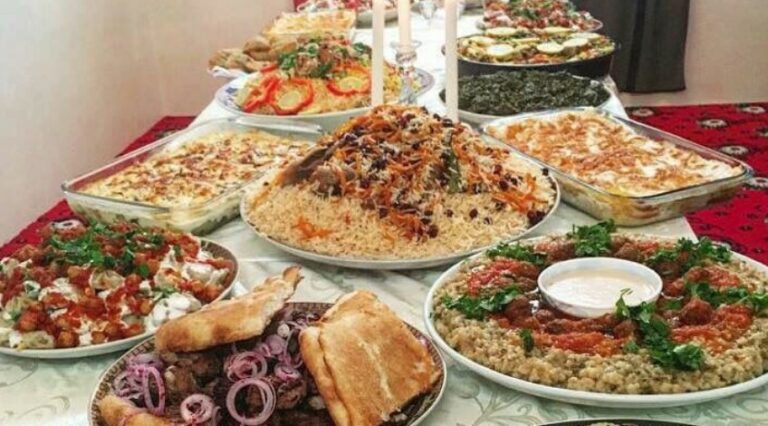Unveiling Afghan Street Food Delights
Afghan street food may not be as popular as other cuisines, but it is certainly worth exploring. From mouth-watering rice dishes to delectable stuffed bread, Afghan street food offers a unique gastronomic experience. Unveiling the mystery of uncommon Afghan street food delicacies is a must for food lovers who wish to explore new flavors and textures.
Introduction to Afghan Cuisine
Afghanistan is a landlocked country in South Asia, sharing borders with Pakistan, Iran, Turkmenistan, Uzbekistan, and Tajikistan. Afghan cuisine is a blend of Middle Eastern, Central Asian, and South Asian flavors, with a unique touch that sets it apart from other regional cuisines. Some of the key ingredients used in Afghan cuisine are rice, meat, vegetables, herbs, and spices.
Unique Afghan Delicacies
Afghan cuisine is rich in unique delicacies that are not commonly found in other countries. Some of the most popular Afghan street food dishes are Kabuli Pulao, Bolani, Mantu, Ashak, and Qabili Palau.
Kabuli Pulao: A Rice Dish Like No Other
Kabuli Pulao is a popular Afghan rice dish made with long-grain rice, meat (usually lamb or beef), and a variety of spices. The dish is garnished with fried raisins, carrots, and almonds, which give it a sweet and nutty flavor. Kabuli Pulao is an excellent choice for meat lovers who wish to explore the rich flavors of Afghan cuisine.
Bolani: A Delicious Stuffed Bread
Bolani is a stuffed bread that is commonly eaten as a snack or breakfast food in Afghanistan. The bread is made with a dough of flour, water, salt, and sometimes yogurt. The stuffing can be made with a variety of ingredients such as potatoes, spinach, pumpkin, or leeks. Bolani is usually served with a dipping sauce made of yogurt, garlic, and mint.
Mantu: Afghan Dumplings with a Twist
Mantu is a type of dumpling that is commonly found in Afghanistan, Uzbekistan, and Tajikistan. The dumplings are filled with minced meat (usually lamb or beef), onions, and spices. They are then steamed and served with a tomato-based sauce and yogurt. Mantu is a must-try dish for those who wish to explore the rich flavors of Afghan street food.
Ashak: A Vegetarian Delight
Ashak is a vegetarian dish that is commonly eaten in Afghanistan. The dish is made with dumplings filled with scallions, leeks, spinach, and cilantro. The dumplings are then topped with a yogurt-based sauce and a tomato-based sauce. Ashak is a great option for vegetarians who wish to explore the rich flavors of Afghan cuisine.
Qabili Palau: A Hearty Meat and Rice Dish
Qabili Palau is a hearty meat and rice dish that is commonly served at special occasions in Afghanistan. The dish is made with long-grain rice, lamb or beef, carrots, raisins, and a variety of spices. Qabili Palau is usually garnished with fried almonds and is served with a side of yogurt. This dish is a must-try for meat lovers who wish to explore the hearty flavors of Afghan cuisine.
In conclusion, Afghan street food offers a unique gastronomic experience that is worth exploring. From mouth-watering rice dishes to delectable stuffed bread, Afghan cuisine is rich in unique delicacies that are not commonly found in other countries. By trying out these uncommon Afghan street food delicacies, food lovers can discover new flavors and textures that will tantalize their taste buds.


